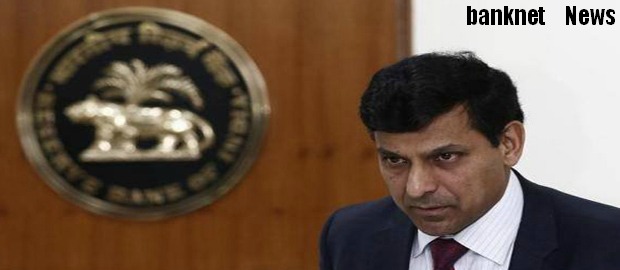

Fifth Bi-Monthly Monetary Policy Statement, 2014-15 By Dr. Raghuram G. Rajan, Governor, RBI - December 02, 2014 - Full Text
4. Domestic activity weakened in Q2 of 2014-15, and activity is likely to be muted in Q3 also because of a moderate kharif harvest. The deficiency in the north-east monsoon rainfall has constrained the pace of rabi sowing, except in the southern States. Despite reasonable levels of water storage in major reservoirs, the rabi crop is unlikely to compensate for the decline in kharif production earlier in the year and consequently, agricultural growth in 2014-15 is likely to be muted. This, along with a slowdown in rural wage growth, is weighing on rural consumption demand.
5. Despite the uptick in September, the growth of industrial production slumped to 1.1 per cent in Q2 with negative momentum in September, unable to sustain the improvement recorded in the preceding quarter. The persisting contraction in the production of both capital goods and consumer goods in Q2 reflected weak aggregate domestic demand. However, more recent readings of core sector activity, automobile sales and purchasing managers’ indices suggest improvement in likely activity. Exports have buffered the slowdown in industrial activity in Q2 but, going forward, require support from partner country growth.
6. In the services sector, the October’s purchasing managers’ survey indicates deceleration in new business. In contrast, tourist arrivals and domestic and international cargo movements have shown improvement. Thus, various constituents of the services sector are emitting mixed signals.
7. A rise in investment is critical for a sustained pick-up in overall economic activity. While low capacity utilisation in some sectors is a dampener, the recent strong improvement in business confidence and in investment intentions should help. In this context, the still slow pace of reviving stalled projects, despite government efforts, warrants policy priority, even as ongoing efforts to ease stress in the financial system unlock resources for financing the envisaged investment push.
8. The fiscal outlook should brighten because of the fall in crude prices, but weak tax revenue growth and the slow pace of disinvestment suggest some uncertainty about the likely achievement of fiscal targets, and the quality of eventual fiscal adjustment. The government, however, appears determined to stay on course.
9. Retail inflation, as measured by the consumer price index (CPI), has decelerated sharply since the fourth bi-monthly statement of September. This reflects, to some extent, transitory factors such as favourable base effects and the usual softening of fruits and vegetable prices that occurs at this time of the year. On the other hand, protein-rich items such as milk and pulses continue to experience upside pressures, reflecting structural mismatches in supply and demand. The absence of adequate administered price revisions in inputs like electricity has contributed to the easing of inflation in the fuel group.
10. In the non-food non-fuel category, inflation eased broadly in September. Further softening of international crude prices in October eased price pressures in transport and communication. However, upside pressures persist in respect of prices of clothing and bedding, housing and other miscellaneous services, resulting in non-food non-fuel inflation for October remaining flat at its level in the previous month, and above headline inflation. Survey-based inflationary expectations have been coming down with the fall in prices of commonly-bought items such as vegetables, but are still in the low double digits. Administered price corrections, as and when they are effected, weaker-than-anticipated agricultural production, and a possible rise in energy prices on the back of geo-political risks could alter the currently benign inflation outlook significantly.
11. Liquidity conditions have eased considerably in Q3 of 2014-15 due to structural and frictional factors, as well as the fine tuning of the liquidity adjustment framework. With deposit mobilisation outpacing credit growth and currency demand remaining subdued in relation to past trends, banks are flush with funds, leading a number of banks to reduce deposit rates. The main frictional source of liquidity has been the large release of expenditure/transfers by the government. In view of abundant liquidity, banks’ recourse to the Reserve Bank for liquidity through net fixed and variable rate term and overnight repos and MSF declined from `803 billion, on average, in Q1 to `706 billion in Q2 and further to `476 billion in October-November. The use of export credit refinance also declined from 52.6 per cent of the limit in Q2 to 32.6 per cent in October-November. The revised liquidity management framework introduced in September, has helped the weighted average cut-off rates in the 14-day term repo auctions as well as in the overnight variable rate repo auctions to remain close to the repo rate, and the volatility of the weighted average call rate has fallen, apart from episodes of cash build-up ahead of Diwali holidays.
12. The Reserve Bank determines the need for open market operations (OMO) based on its assessment of monetary conditions rather than on a specific view on long term yields. On an assessment of the permanent liquidity conditions, the Reserve Bank conducted OMO sales worth `401 billion during October to December so far.
13. Merchandise exports declined in October, mainly reflecting sluggish external demand conditions, but also the softening of international prices resulting in lower realisations. For the period April-October as a whole, however, export growth remained positive although the deceleration since July requires vigilance. With import growth remaining modest on account of the decline in POL imports due to falling crude prices, the trade deficit narrowed from its level a year ago. Gold imports have surged since September in volume terms, largely reflecting seasonal demand. Barring month-to-month variations, non-oil non-gold import growth has remained moderate, with anecdotal evidence of imports substituting for shortfalls in domestic production. Even as external financing requirements stay moderate, all categories of capital flows, except non-resident deposits, have been buoyant. The consequent accretion to reserves denominated in US dollars has been moderated by valuation effects resulting from the strength of the US dollar.
<<< GO BACK TO MAIN PAGE

BANKING

FINANCE

INSURANCE

TECHNOLOGY

Foreign Exchange


